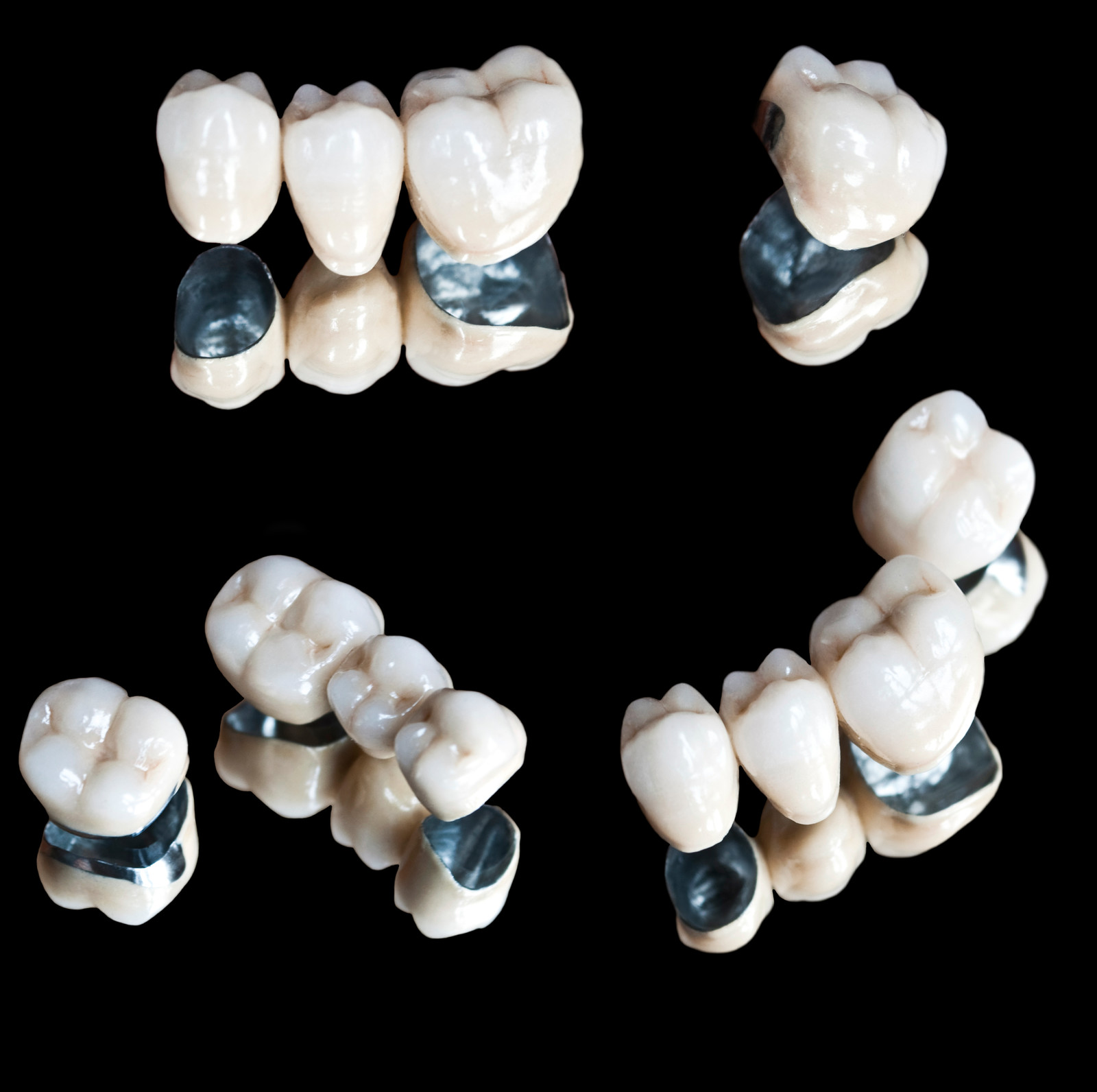Dental Crowns
Our teeth go through a lot over the years. From sipping glasses of wine to sometimes engaging in a rough activity, our teeth can take on stains, chips, and even a bit of tooth decay. While dentists have plenty of ways to help us protect our teeth, receiving a dental crown is one way to remedy a damaged tooth.
Dental crowns are created like caps, fitting securely over our tooth. The cap can help restore the shape, strength, size, and even appearance of our original teeth. When set in place, a crown will look just like every other tooth, possibly better!

Who Needs Dental Crowns?
Dental crowns are a versatile procedure that can be applied to a number of situations listed below:
- To hold a dental bridge securely
- Cover a tooth that has received a filling
- Cover a dental implant
- Strengthen a tooth
- Protect a weak tooth that has encountered cracks or fractures
- Restore a broken tooth or tooth that has been worn
- Cover a misshaped tooth
- Cover a discolored tooth
- Improve the general cosmetic appearance of a tooth
If you are dealing with a dental mishap or issue consider contacting your dental clinic to discuss your options, a dental crown may be the perfect solution.
The Dental Crown Procedure
Crowns come in multiple options that vary in color, durability, and material. Dental crowns are recommended when a patient’s tooth has a large filling, had root canal therapy, or for cosmetic reasons. The steps of the dental crown procedure are listed below:
- Numbing the Tooth: your dentist will use a local anesthetic to numb the tooth and surrounding tissue. This allows for your dentist to comfortably perform the following steps.
- Impressions: accurate models of the tooth requiring the crown, need to be taken in order for the dental lab to fabricate the perfect fit for the patient.
- Preparing the Tooth: A dental crown acts as the way the crown of a natural tooth would, with a hollow space inside like a cap. The core underneath the crown needs to be reduced to allow for the crown to fit the tooth properly. The crown is designed to fit the tooth in a secure manner, keeping bacteria away from the vulnerable area of the tooth underneath the crown. Your dentist may place a rubber dam over the teeth involved, to keep the area dry and free from conflicting materials during the process.
- Temporary Crown: Your dentist will place a temporary crown over the prepared tooth to allow the patient for adequate day to day functionality and comfort while the dental crown is being made.
- Cementing the Permanent Crown: It can take up to 10 business days for the dental lab to create a permanent crown. Your dentist will schedule an appointment for cementation after completing your tooth preparation appointment. When your crown is created, your dentist will begin the cementation appointment by numbing the prepared tooth. Thereafter, thoroughly cleaning the prepared tooth before cementing the crown.
- Adjustments: After the crown is cemented, your dentist will check the contacts between the crown and adjacent teeth, most likely using a piece of dental floss, to ensure the contact is not too tight or too lose as this can cause an issue in the future. A contact that is too tight will create an issue for the patient when they floss their teeth. However, no contact between teeth can allow food to become lodged between teeth and cause tooth decay. If is too tight, a small amount of the adjacent tooth will be reduced to avoid damaging the crown. If there is no contact, the crown will have to be remade to avoid complications.
- Final Touches: When your dentist is satisfied with how the crown fits, the final cementation will commence. This involves keeping your tooth dry and isolated from any conflicting materials or elements. Bonding material will then be placed on the prepared tooth. This may require a curing light to help set the bonding material. Floss is used to remove excess cement between the teeth and a scaler used to remove cement from around the tooth and below the gum line.
- Checking the Bite: the bite of the patient is checked 10 minutes after the cement has been set. This is done to ensure the patient does not experience tooth pain or sensitivity later.
If you have any questions regarding the dental crown procedure, call your Lethbridge dental clinic and our experienced and helpful staff will be happy to answer them for you.